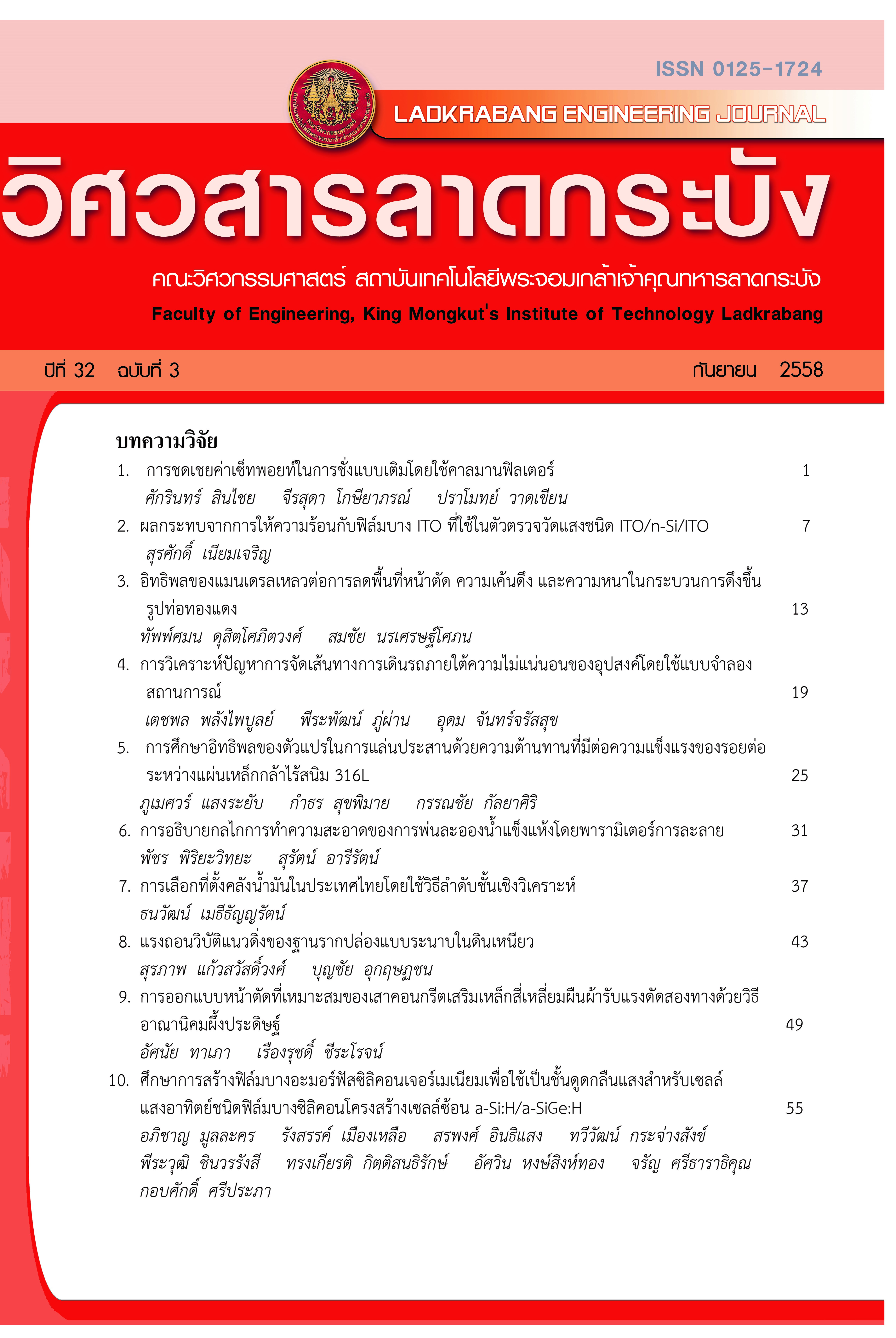Optimum Design of Reinforced Concrete Biaxial Bending Rectangular Column using Artificial Bee Colony Algorithm
Keywords:
Optimum design,, Biaxial bending column,, Artificial bee colony algorithmAbstract
This research presents the application of artificial bee colony algorithm for optimum cross-section design of reinforced concrete biaxial rectangular column. An artificial bee colony algorithm was developed by Microsoft visual basic 6 to design the reinforced concrete column and verified cross-section design by EIT 1008-38 strength design method standard. The parameters of artificial bee colony algorithm were adjusted to obtain the optimal iteration for saving cost of column design. Two examples were selected that various define different applied load and concrete covering. The result showed that the artificial bee colony algorithm can be apply for optimum design of biaxial reinforced concrete rectangular column and faster than that of the simulated annealing algorithm.
References
[2] D. Karaboga and B. Basturk, “Artificial bee colony optimization algorithm for solving constrained optimization problems LNCS,” Advances in soft computing-foundations of fuzzy logic and soft computing, vol.4529, pp. 789–798, 2007.
[3] D. Karaboga and B. Basturk, “On the performance of artificial bee colony (ABC) algorithm,” Applied soft computing, Vol. 8, pp. 687–697, 2007.
[4] D. Karaboga and B. Akay, “A comparative study of artificial bee colony algorithm,” Applied mathematics and computation, vol. 214, pp. 108–132, 2009.
[5] Engineering institute of thailand, Standard of reinforced concrete building, strength method (E.I.T. 1008-38), 1997.
[6] Committee of construction price, Labor account/operation for estimate and calculate price (revised edition) year 2014, Bangkok in Thailand, 2014.
[7] A. Tapown, A. Lamom, J. wongpa and R. Cheerarot, “Optimum design of reinforced concrete biaxial rectangular column using simulated annealing algorithm,” KMUTT Research and development journal, Vol. 36, pp. 33–50, 2013.
Downloads
Published
How to Cite
Issue
Section
License
The published articles are copyrighted by the School of Engineering, King Mongkut's Institute of Technology Ladkrabang.
The statements contained in each article in this academic journal are the personal opinions of each author and are not related to King Mongkut's Institute of Technology Ladkrabang and other faculty members in the institute.
Responsibility for all elements of each article belongs to each author; If there are any mistakes, each author is solely responsible for his own articles.






